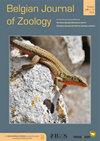生态进化划分指标:生物学家的实用指南
IF 1.1
4区 生物学
Q2 ZOOLOGY
引用次数: 12
摘要
众所周知,生态和进化过程可以在相似的时间尺度上发生,从而产生生态进化动力学。生态进化动力学的主要问题之一是评估进化、生态学及其相互作用在所研究的生态进化变化中的相对贡献。这导致了一些方法的发展,旨在量化生态学和进化对观察到的性状变化的贡献,这里称为生态进化划分指标。这项研究概述了目前使用的划分指标,重点是可以量化进化和非进化对种群和群落特征变化的贡献的方法。我强调了在以前的研究中发现的这些指标之间的关键差异。此外,我还提供了“Geber”方法和反应范数方法之间的详细比较。接下来,我为研究人员提供了一个指南,以评估哪些指标最适合他们的数据,概述这些指标所需的数据类型,以及如何收集这些数据,重点关注社区数据。本文章由计算机程序翻译,如有差异,请以英文原文为准。
Eco-evolutionary partitioning metrics: a practical guide for biologists
It is well-known that ecological and evolutionary processes can occur on similar time scales resulting in eco-evolutionary dynamics. One of the main questions in eco-evolutionary dynamics involves the assessment of the relative contribution of evolution, ecology and their interaction in the eco-evolutionary change under study. This has led to the development of several methods aimed to quantify the contributions of ecology and evolution to observed trait change, here referred to as eco-evolutionary partitioning metrics. This study provides an overview on currently-used partitioning metrics with a focus on methods that can quantify evolutionary and non-evolutionary contributions to population and community trait change. I highlight key differences between these metrics found in previous studies. Additionally, I also provide a detailed comparison between the ‘Geber’ method and the reaction norm approach. Next, I provide a guideline for researchers to assess which metrics are best suited for their data, give an overview on the type of data needed for these metrics, and how this data can be collected with a focus on community data.
求助全文
通过发布文献求助,成功后即可免费获取论文全文。
去求助
来源期刊

Belgian Journal of Zoology
生物-动物学
CiteScore
1.90
自引率
0.00%
发文量
10
审稿时长
>12 weeks
期刊介绍:
The Belgian Journal of Zoology is an open access journal publishing high-quality research papers in English that are original, of broad interest and hypothesis-driven. Manuscripts on all aspects of zoology are considered, including anatomy, behaviour, developmental biology, ecology, evolution, genetics, genomics and physiology. Manuscripts on veterinary topics are outside of the journal’s scope. The Belgian Journal of Zoology also welcomes reviews, especially from complex or poorly understood research fields in zoology. The Belgian Journal of Zoology does no longer publish purely taxonomic papers. Surveys and reports on novel or invasive animal species for Belgium are considered only if sufficient new biological or biogeographic information is included.
 求助内容:
求助内容: 应助结果提醒方式:
应助结果提醒方式:


